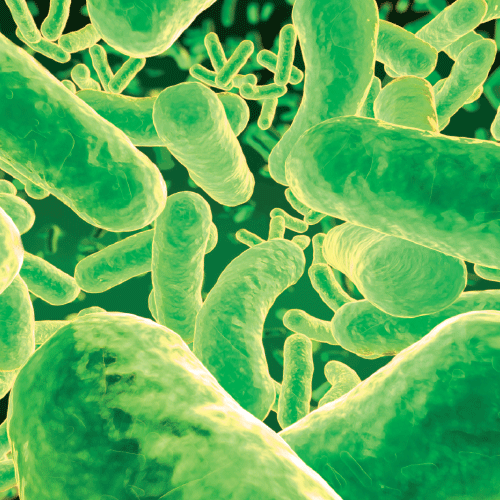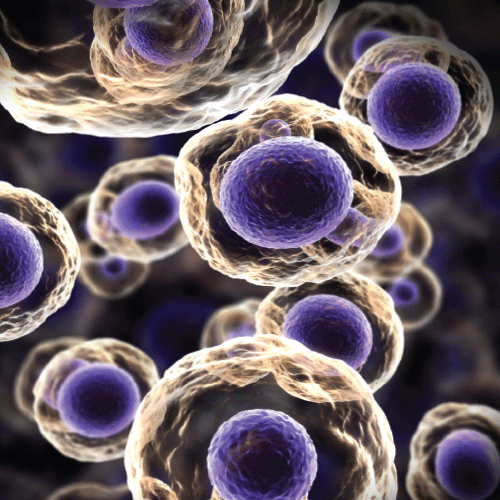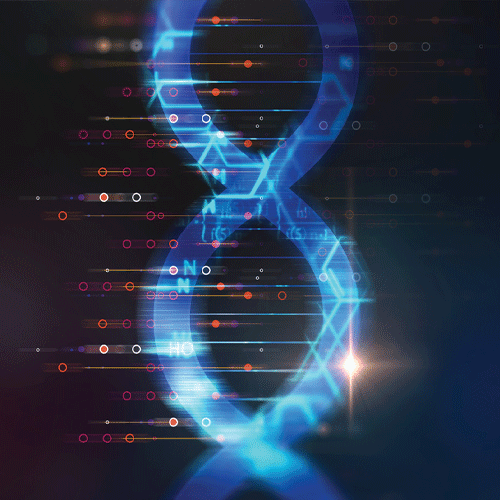Infectious Disease and Genomics
The impact of infectious disease is a major healthcare challenge. Antibiotic resistant strains of pneumonia and staph infections are surfacing in hospitals, nursing homes and locker rooms. The 2009 H1N1 virus confirms long-held concerns about a pandemic influenza virus spreading unchecked across the globe. In both cases, the infectious agents seem to evolve with speed, evading treatment methods. What are we facing and how do these organisms change so quickly?
 Infectious disease can be classified into two broad categories based on the infectious agent: bacterial or viral. Bacteria are single-celled organisms that live in nearly every environment on the planet, including in and on the human body. Most bacteria associated with humans are beneficial and help with daily functions like digestion and protection. Other versions (strains) of bacteria are pathogenic, meaning they can cause illness or harm. If pathogenic bacteria enter the body, they may temporarily escape the body’s immune system. Once recognized, the body’s immune response attacks invading bacterial cells. Most healthy individuals will be able to fight off a bacterial infection, often with the help of an antibiotic. Antibiotics weaken the bacteria by interfering with its ability to carry out functions like protein synthesis and cell division.
Infectious disease can be classified into two broad categories based on the infectious agent: bacterial or viral. Bacteria are single-celled organisms that live in nearly every environment on the planet, including in and on the human body. Most bacteria associated with humans are beneficial and help with daily functions like digestion and protection. Other versions (strains) of bacteria are pathogenic, meaning they can cause illness or harm. If pathogenic bacteria enter the body, they may temporarily escape the body’s immune system. Once recognized, the body’s immune response attacks invading bacterial cells. Most healthy individuals will be able to fight off a bacterial infection, often with the help of an antibiotic. Antibiotics weaken the bacteria by interfering with its ability to carry out functions like protein synthesis and cell division.
In recent years there has been an increase in bacteria that are resistant to the effects of antibiotics, such as the antibiotic-resistant form of Staphylococcus aureus, better known as MRSA. Bacteria reproduce quickly, copying their DNA before each cell division. In some cases, the copying process introduces small DNA changes. By chance, these changes may make the bacteria more resistant to a particular antibiotic. If these bacteria spread to other individuals, then a strain with antibiotic resistance has formed. As additional changes occur, the bacteria may become resistant to a wide range of antibiotics (a super-bug), becoming difficult to effectively treat.
In contrast to bacteria, viruses are small packages of genetic material that infect and take over a cell, converting it to a virus-producing factory. The takeover may occur immediately after the individual is exposed, as happens with the flu, leading quickly to symptoms. Other viruses (e.g. the herpes simplex virus 1 that leads to cold sores) cause a delayed infection with symptoms appearing weeks, months or even years after exposure. Delayed infection viruses hide their genetic material in the cell until conditions are optimal for the virus to reproduce itself. Unlike bacteria, viral infections cannot be treated with antibiotics, although antiviral medications, such as Tamiflu®, may be helpful in certain instances.
Viruses reproduce very quickly once activated and like bacteria randomly change their genetic material, often leading to new strains. In addition, if two viruses simultaneously infect the same organism, their genetic information may mix, leading to a completely new strain. This is what occurred with the 2009 novel H1N1 influenza virus. Studies have shown that 2009 H1N1 contains genetic material from pig- bird- and human-based flu viruses.
Understanding the genetic and molecular basis of these organisms allows scientists to develop better diagnostic tests, treatments and preventatives. Although the genomes of pathogens have the capability to change rapidly, the genomes are small and often change in semi-predictable ways. Scientists may never be able to cure the flu or common cold, but through genetics and biotechnology, more accurate and faster diagnostics can be made.


